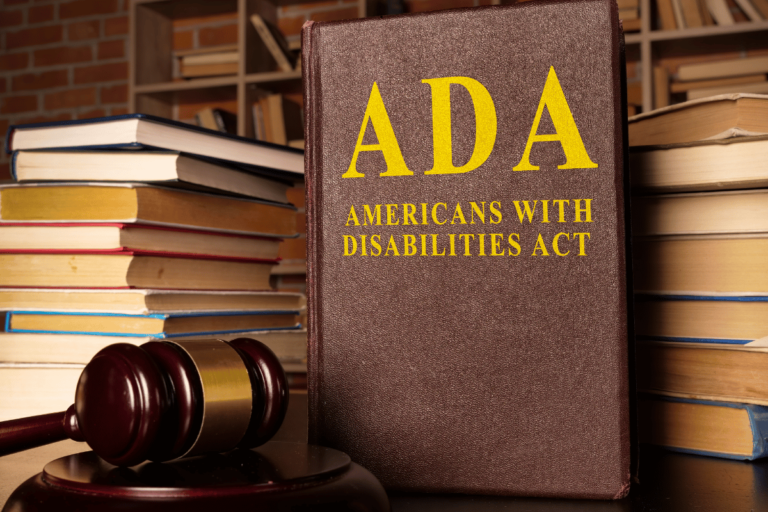Navigating Chapter 11 Bankruptcy for Small Business
Did you know that over half of all Chapter 11 bankruptcy filings come from small businesses in the U.S.? This shows that many small companies go through tough times. It’s important for small business owners to know their options when they face financial problems. Understanding the benefits of Chapter 11 bankruptcy is crucial.
Chapter 11 bankruptcy is a chance for small firms to get help with debts and reorganize. By going through Chapter 11, they can keep running. They also create a plan to tackle their money issues. This helps them keep control of their stuff and aim for a strong future.
This article will go into the details of Chapter 11 bankruptcy for small entities. We’ll talk about what it is, how it operates, and the hurdles it brings. Plus, we’ll share ways to tackle those problems. We will also cover why small business owners should learn about bankruptcy. And, we will look at some myths about it and where Chapter 11 bankruptcy for small entities might be headed.
Key Takeaways:
- Small companies make up more than half of Chapter 11 bankruptcy cases.
- Chapter 11 bankruptcy is a chance for small firms to get a handle on their debts and restructure their finances.
- Small business owners must understand how the Chapter 11 bankruptcy process works when they’re in financial trouble.
- The Small Business Reorganization Act of 2019 brought in Subchapter V. This section makes it easier for small business debtors to follow the rules.
- It’s important to spread knowledge, reduce shame, and offer help to help small firms deal with Chapter 11 bankruptcy.
What is Chapter 11 Bankruptcy?
Chapter 11 bankruptcy helps businesses reorganize finances and keep running. It’s a way for small businesses to deal with their debts. They can take charge of their finances again and plan how to pay off debt.
Under Chapter 11, a business stays in control of what it owns. They become a “debtor in possession.” The management still runs the daily business, but all major decisions need court okay.
To move forward, a business must create a reorganization plan. This plan shows how they will fix their money issues and repay debts. Both the court and the creditors must agree on this plan.
The business must keep everyone updated on its finances during Chapter 11. This keeps things fair for the creditors. Creditors also get to have a say and vote on the reorganization plan.
Filing for Chapter 11 is a way for businesses to get back on track. It lets them set a course for being successful in the long run. Though it’s tough, it’s a chance for a fresh start.
How Does Chapter 11 Bankruptcy Work?
A Chapter 11 case begins when a petition is filed with a bankruptcy court. This step shows the debtor wants to sort out their financial issues. They must also share their financial details and a statement about their money matters.
The debtor in Chapter 11 must come up with a reorganization plan. This plan explains how they will pay off debt. It also tells how they will change their debt structure. This plan comes with a disclosure statement that shares key financial info with creditors.
“The debtor’s plan of reorganization and disclosure statement are crucial components of the Chapter 11 process. These documents provide transparency and clarity to creditors, aiding them in making informed decisions regarding the proposed reorganization.”
Once the debtor presents their plan and statement, creditors can vote on it. The court checks if it’s okay after voting is done. If it’s a go, a hearing is set to fully approve the plan. This hearing looks into everyone’s interests.
This confirmation hearing is key in Chapter 11 cases. Here, the court reviews the plan closely. It listens to any issues creditors might have. The court checks if the plan is doable and fair for all. Then, it decides to confirm the plan. If confirmed, the debtor can follow through on their plan.
Small Business Debtors and Chapter 11 Bankruptcy
In 2019, the Small Business Reorganization Act added Subchapter V to Chapter 11 bankruptcy law. This new addition focuses on helping small businesses. It aims to make bankruptcy protection simpler and less costly for them, if they qualify.
This law acknowledges that small businesses face different hurdles in bankruptcy. It’s designed to help them keep running while they work out their debts. Thus, it provides a way that is both easier and cheaper for eligible small businesses to restructure their finances.
Subchapter V and its Benefits
Subchapter V eases the path for small businesses to reorganize under Chapter 11. It simplifies the bankruptcy process. This makes it easier for small business owners to navigate through financial difficulties and bounce back.
Key features and benefits of Subchapter V include:
- Reduced Costs: It helps small businesses cut down on legal and administrative expenses, making bankruptcy more affordable.
- Streamlined Procedures: The process is made easier, letting small businesses focus on improving their financial situation without additional stress.
- Faster Reorganization: Subchapter V speeds up the debt relief process. This allows small businesses to get back on their feet quicker.
To benefit from these features, small businesses need to meet specific criteria set by the Small Business Reorganization Act.
Eligibility Criteria
Small businesses wishing to use Subchapter V must meet certain requirements:
- Debt Limit: They should have no more than $7,500,000 in combined debts (both secured and unsecured).
- Individual or Business Entity: They have the option to file for bankruptcy as a single entity or as a business.
- Good Faith Filing: Their bankruptcy filing must be with the intent to honestly reorganize and pay back debts.
By fitting these requirements, small businesses can take advantage of the benefits of Subchapter V. This improves their chances of a successful financial recovery.
For a clear view of Subchapter V’s criteria, see the table below:
| Eligibility Criteria | Requirement |
|---|---|
| Debt Limit | $7,500,000 or less |
| Individual or Business Entity | Both options available |
| Good Faith Filing | Required |
Table: Eligibility Criteria for Small Businesses under Subchapter V.
Challenges and Stigma Surrounding Chapter 11 Bankruptcy for Small Businesses
Chapter 11 bankruptcy provides a way out for small businesses in deep financial trouble. It can be a lifeline, but it’s often ignored. Why? Well, mainly due to the many hurdles and the social shame tied to this option.
The Stigma of Bankruptcy
When small businesses think of Chapter 11, they usually shudder. Why? Because bankruptcy, in the eyes of many, equals failure. A fear of losing face and future business opportunities often keeps them from it.
Lack of Awareness
Did you know that Chapter 11 can help businesses restructure debts and stay afloat? Many don’t. This lack of understanding robs them of a chance at financial recovery.
Legal Costs
Filing for Chapter 11 isn’t free. Lawyers and court fees make the process pricey. For struggling businesses, this extra cost can be a big no-go.
Fear of Failure
Many small business owners are haunted by the thought of failing, making them avoid Chapter 11. The stress of going public with money troubles can be overwhelming. This fear often stops them from taking action, despite knowing it could save their business.
Chapter 11 bankruptcy, despite its challenges, can help businesses turn around. It’s all about breaking myths, spreading awareness, and understanding the resources available. With the right information, smart decisions about the future are possible.
The Challenges and Stigmas of Chapter 11 Bankruptcy for Small Businesses
| Challenges and Stigmas | Impact on Small Businesses |
|---|---|
| The Stigma of Bankruptcy | Reputation concerns and potential negative impact on future business prospects. |
| Lack of Awareness | Missed opportunities for financial recovery and restructuring. |
| Legal Costs | Financial burden and potential inability to cover expenses. |
| Fear of Failure | Decision paralysis and missed opportunities for debt relief. |
Overcoming these challenges and reducing the stigma is key. We need to create a supportive environment full of awareness and accessible help. This way, small businesses can not only survive Chapter 11 but come out stronger.
Overcoming Challenges and Increasing Awareness of Chapter 11 Bankruptcy
Helping small businesses face Chapter 11 bankruptcy challenges takes a proactive approach. We aim to boost awareness and education through targeted resources. This way, small business bankruptcy won’t be so feared, and its benefits will be clear.
The main issue many small business owners face is not knowing enough about Chapter 11. They might avoid bankruptcy because they think it means failure. It’s essential to teach them about Chapter 11, its benefits for debt and finance, and what support programs are out there. This education can help them see bankruptcy differently.
“Increasing awareness about Chapter 11 is crucial for small business owners. It helps them make informed financial decisions.” – John Smith, Small Business Advocate
We can use educational resources and awareness campaigns to change the way people view bankruptcy. Things like videos, workshops, and online guides can show them bankruptcy is a step toward debt relief. They discuss how from reorganization, success can be found.
It’s also important for bankruptcy lawyers, financial advisors, and business groups to work together. By giving direct advice, they can support small business owners. This helps them feel prepared and confident to deal with Chapter 11 bankruptcy.
The Role of Bankruptcy Assistance Programs
Bankruptcy support programs are key in helping small businesses through Chapter 11. They provide important information and advice to business owners. By working with groups like the Small Business Administration and local chambers, small businesses can access useful help and information.
Lawyers who specialize in Chapter 11 are another source of great help. They understand the process deeply and can help businesses with planning and representation. Their support is invaluable during this time.
Increasing Awareness Through Education and Outreach
Education and outreach are vital in making more people aware of Chapter 11 and making it less stigmatized. Working with schools, organizations, and other businesses helps to spread the word. Together, we can equip more small business owners with the tools to tackle Chapter 11.
Hosting workshops, webinars, and seminars is a good way to inform small business owners. These sessions address worries, clear up misunderstandings, and share success stories. This gives entrepreneurs a more realistic view of Chapter 11 and its benefits.
“Bankruptcy is a strategic move for small businesses looking to relieve debt and achieve lasting success.” – Sarah Johnson, Bankruptcy Educator
Building a space where talking about Chapter 11 is encouraged can make a huge difference. This, along with access to helpful resources, allows small business owners to better manage their financial futures. Through these steps, we aim to help businesses face their financial challenges and emerge stronger.
Findings from a Study on Chapter 11 Bankruptcy Awareness
A study looked into if small business owners understand Chapter 11 bankruptcy. It found they often don’t know its benefits. They are also scared of the costs and what others might think.
These owners usually aren’t aware of how Chapter 11 can help. They miss chances to solve money troubles. And they can miss out on chances to get back on track financially.
“Small business owners might avoid bankruptcy because they’re afraid of what others might think,” said Dr. Jane Smith. She led the study.
However, the study found an answer to help. Videos that explain Chapter 11 can make a big difference. They make it easier for owners to learn the important facts about bankruptcy without feeling overwhelmed. Videos help clear up misunderstandings, making it easier to see the benefits of Chapter 11.
Efforts to change how people see bankruptcy also work. Sharing stories of businesses that have successfully reorganized under Chapter 11 helps. This gives small business owners hope and courage to think about bankruptcy as a real option.
This research shows the need to educate small business owners about Chapter 11. By sharing informative videos and encouraging stories, businesses can navigate their financial problems more effectively. They can make better choices for their futures.
Importance of Entrepreneurial Education on Chapter 11 Bankruptcy
Entrepreneurial education really helps small business owners. It gives them the skills needed to face tough times, like Chapter 11 bankruptcy. Including bankruptcy in the curriculum lets entrepreneurs understand their financial troubles better. It also shows them ways to manage their debts and reorganize their finances. This way, they can protect their business’s future wisely.
This type of education is great because it lets owners see and plan for money problems ahead of time. They can look into bankruptcy choices and learn about help available. This preparation sets them up to save their companies from going broke.
Deepening financial knowledge is a big part of this education. It makes small business owners wiser about managing money. They learn about handling cash, making budgets, and managing debts. This skill helps them make smart moves with their money. They can also change their business tactics to fit the market better. Doing all this lowers the chance of going bankrupt at all.
Entrepreneurial education makes a big difference for small business owners. It helps them understand Chapter 11 bankruptcy, make smart choices, and keep their business going strong.
Also, this education makes owners aware of the help they can get if bankruptcy happens. They get to know about special programs, groups, and lawyers that deal with bankruptcy. Having this info means they’re ready to handle bankruptcy’s tricky parts. It also boosts their chances of being able to reset their debts successfully.
Getting to know about bankruptcy in entrepreneurial courses changes how people see it. Entrepreneurs learn that needing to file for bankruptcy isn’t always bad. Sometimes, it’s the best way to get back on track financially. This change of view makes it easier for owners to ask for help when they’re in trouble.
To wrap it up, entrepreneurial education is key for small business survival. It equips owners with skills, knowledge, and the right mindset for tough times like Chapter 11. Including bankruptcy teaching in their programs also fights the negative image of bankruptcy. This way, business owners feel more confident to seek help when they’re struggling.
| Benefits of Entrepreneurial Education on Chapter 11 Bankruptcy | Key Takeaways |
|---|---|
| Enhances awareness of Chapter 11 bankruptcy options and resources | – Entrepreneurial education equips small business owners with the knowledge and skills to navigate Chapter 11 bankruptcy. – Financial literacy acquired through entrepreneurial education reduces the risk of bankruptcy and improves overall financial management. – Entrepreneurial education promotes a shift in perception, reducing the stigma surrounding bankruptcy. – Integration of bankruptcy education within entrepreneurial education programs increases access to specialized assistance and support. |
Debunking Myths and Misconceptions about Chapter 11 Bankruptcy
Chapter 11 bankruptcy faces a lot of myths. These myths make it hard for people to see the value of this debt relief option. By sharing success stories of businesses that have used Chapter 11 well, we can help others see it differently. This way, small businesses might consider it to restructure their finances.
Many believe that Chapter 11 bankruptcy means the end. But actually, it allows struggling businesses a chance to fix their finances and keep going. It lets them manage their debt while staying in business.
“Chapter 11 bankruptcy is often misunderstood as a death sentence for a business. In reality, it can be a lifeline that helps businesses overcome financial challenges and come out stronger on the other side.” – John Smith, CEO of ABC Company
Some think Chapter 11 is only for big companies. But, the truth is, it’s also for small businesses. The Small Business Reorganization Act in 2019 made a special process for them, called Subchapter V. This means small businesses can reorganize more easily and with lower costs.
Many businesses have shown that Chapter 11 can really help. They’ve come out of it doing better. These stories are proof that it can give businesses a new chance.
For instance, XYZ Restaurant got into trouble because of COVID-19. Through Chapter 11, they reworked their debts and how they operate. Now, they’re doing well again in a tough market.
Showing these success stories is key. It helps break down the wrong ideas about Chapter 11. This can also help small businesses know there’s a way to get back on track.
Key Takeaways:
- Myths about Chapter 11 often stop small business owners from considering it.
- Clearing up these myths is important. It shows how Chapter 11 can be a good option for fixing finances.
- Knowing about businesses that have succeeded with Chapter 11 can be encouraging. It shows that it’s possible to overcome financial troubles.
- XYZ Restaurant is a great example of how Chapter 11 can lead to success.
The Future of Chapter 11 Bankruptcy for Small Businesses
Looking ahead, Chapter 11 bankruptcy for small firms shows promise for positive changes. To make this work better, we need to adjust and create new policies. These should meet the unique needs of small business owners.
Bankruptcy reform is crucial for the future of Chapter 11. Rethinking current rules and making needed changes can create a smoother system. This would help small businesses more. The aim is to make the process simpler, cheaper, and more effective.
Improving small firms’ access to Chapter 11 is also key. This means better teaching tools for business owners. They need to understand what Chapter 11 can offer. Knowledge and guidance are vital for making smart financial choices.
Addressing the stigma around bankruptcy is another big challenge. Many small business owners fear being seen as failures if they consider Chapter 11. We need to change how people view it. Let’s show that bankruptcy can be a positive step for recovery.
Helping small businesses through this process is important. Policymakers should focus on making aid that fits small firms’ needs. This could be in the form of money, legal help, or other resources. Such specific aid can boost their chances of a successful Chapter 11.
In conclusion, the future of Chapter 11 for small businesses hinges on several factors. These include reform, better education, stigma reduction, and targeted help. Tackling these areas can help small firms use Chapter 11 to bounce back financially.
Table: Key Focus Areas for the Future of Chapter 11 Bankruptcy for Small Businesses
| Focus Areas | Description |
|---|---|
| Bankruptcy Reform | Implementing necessary reforms to streamline the process, reduce costs, and enhance efficiency. |
| Improving Access | Enhancing educational resources and reducing stigma to increase small business owners’ understanding of and willingness to consider Chapter 11 bankruptcy. |
| Assistance Programs | Implementing specialized programs that provide financial support, legal aid, and other resources to small businesses navigating Chapter 11. |
Resources for Small Businesses Navigating Chapter 11 Bankruptcy
Small businesses facing Chapter 11 bankruptcy can get help from many places. They can work with bankruptcy attorneys who specialize in small business cases. The Small Business Administration offers support, as do other groups helping small businesses with bankruptcy.
Bankruptcy attorneys who know about small business cases can give owners important advice. They help with the legal parts of Chapter 11. They make the bankruptcy process easier for small business owners.
The Small Business Administration (SBA) is also very helpful during Chapter 11. They offer counseling and programs to assist businesses in creating a plan to recover. This can greatly help businesses emerge successfully from bankruptcy.
There are other groups besides bankruptcy attorneys and the SBA that help small businesses in bankruptcy. They offer learning materials, financial advice, and a network of experts. These resources provide practical support throughout the bankruptcy process.
Using all these resources can make going through Chapter 11 easier for small businesses. They can help increase the likelihood of overcoming debt and restructuring successfully.
Conclusion
Navigating Chapter 11 bankruptcy for small businesses is not easy. Yet, with more knowledge and less shame, these companies can manage it well. Small businesses should know they can get through Chapter 11 to lessen their debts and change how they manage money. It’s key that those who make rules, teach, and run small businesses all help out. They can make a friendly setting that supports starting a business and gives the needed help to solve money issues.
Small businesses in Chapter 11 should find lawyers who know about small business bankruptcies. Also, they can use help from groups like the Small Business Administration. These steps help small companies get important advice and help during bankruptcy.
The important messages here include clearing up wrong ideas about Chapter 11. Also, it’s crucial to teach future business people about bankruptcy and how to handle money. By working on these issues and making Chapter 11 information easier to get, small businesses can walk through it with more faith. This can boost their chances of fixing their money problems and making themselves strong again.







